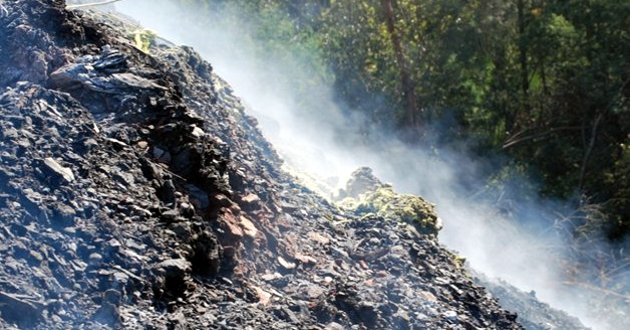New technology will minimise negative impact of coal waste piles
INESC TEC’s Optoelectronics and Electronic Systems Unit (UOSE) has recently started working on a European project where the aim is to install optical fibre sensors in coal piles in self-combustion resulting from mining. The goal is to remotely monitor the evolution of scenarios associated to combustion processes.
08th March 2013
INESC TEC IS LEADING EUROPEAN PROJECT WHERE OPTICAL FIBRES MONITOR THE ENVIROMENT
The aim is to contribute to reducing the environmental impact caused by these materials and prevent other self-combustion processes and associated risks for the environment and humans. This is the first time a technology of this kind is used to solve this problem. The remote and distributed system to monitor temperature and detect gases in coal waste piles in self-combustion will be tested during the second semester of 2013 in São Pedro da Cova, Gondomar (Portugal).


The combustion phenomenon
Fires in coal layers or piles constitute an environmental hazard due to the emission of toxic gases, particulate matter and due to the condensation of neoformed materials, responsible for polluting surrounding water sources and soils. These fires are ignited either by natural or anthropogenic causes, and they are responsible not only for phenomena such as atmospheric pollution, acid rain, landslides, destroyed flora, fauna and human infrastructures, but also for the emergence of health problems. Coal waste piles in combustion have been studied by geologists for a long time and, more recently, there has been an increasing awareness on this matter due to its frequency and negative impact.
In the SUDOE Space (Southwest European Space), the combustion of peat, coal and waste piles constitutes a problem that has already been identified in Spain and Northern Portugal and it is in this Portuguese region that the problem is more serious. In the North of Portugal alone there are over 20 coal waste piles in the Douro coal field which have resulted from mining. Part of these piles is located near urban centres, which constitutes a grave danger.
With this new technology based on optical fibre – which is being implemented by UOSE in partnership with the University of Porto (Department of Geosciences, Environment and Spatial Planning of the Faculty of Science), the University of Alcalá and the Public University of Navarra (Spain), and the University of Limoges (France) – it will be possible to continuously monitor the piles in order to prevent active combustion stages, collect relevant information (T, gas emissions) and understand their dynamics.


Optical fibre technology is safer
The technology receives data on gas emissions and temperature, which are then treated by suitable geological models to elaborate temperature and gas maps. Optical fibre sensors are particularly suitable for the monitoring demands of coal waste piles, especially because the sensing structure must withstand high temperatures and chemically aggressive environments.
The use of optical fibre technology is safer because it is done remotely, and the information is analysed in real time and from multiple points. This way, it is not necessary to use an additional communication channel for telemetry purposes. This double functionality will make it possible to install complex sensor networks in vast regions using just a single lighting/photodetection/signal processing unit.

The aim is to continuously control coal waste piles and identify possible evolution scenarios, thus making it possible to implement corrective/precautionary measures that minimise the impact caused by the combustion processes.
The technology can also be applied in thermal power plants
The importance of continuously monitoring coal waste piles has long been acknowledged but at the time the existing sensing technology was not suitable. But today optical fibre can be used to monitor these materials. Because of the dual characteristic of optical fibres, which is simultaneously a communication channel and a detection element, it is particularly appropriate for this type of application.


São Pedro da Cova (Gondomar, Portugal) was the location chosen to test the optical fibre prototype during the second semester of 2013. It is expected that after the pilot is tested and validated the new monitoring technology will be used on a large scale. This system can also be used to monitor coal storage piles in thermal power plants.
The project ECOAL – MGT (Ecological Management of Coal Waste Piles in Combustion), with a budget of 900 thousand Euros, is co-financed by the European Union’s ERDF, as part of the SUDOE programme. The UOSE team, which is coordinating the project, is set up by José Manuel Baptista (project manager), José Luís Santos, Ireneu Dias, João Ferreira, Pedro Jorge and Orlando Frazão.


